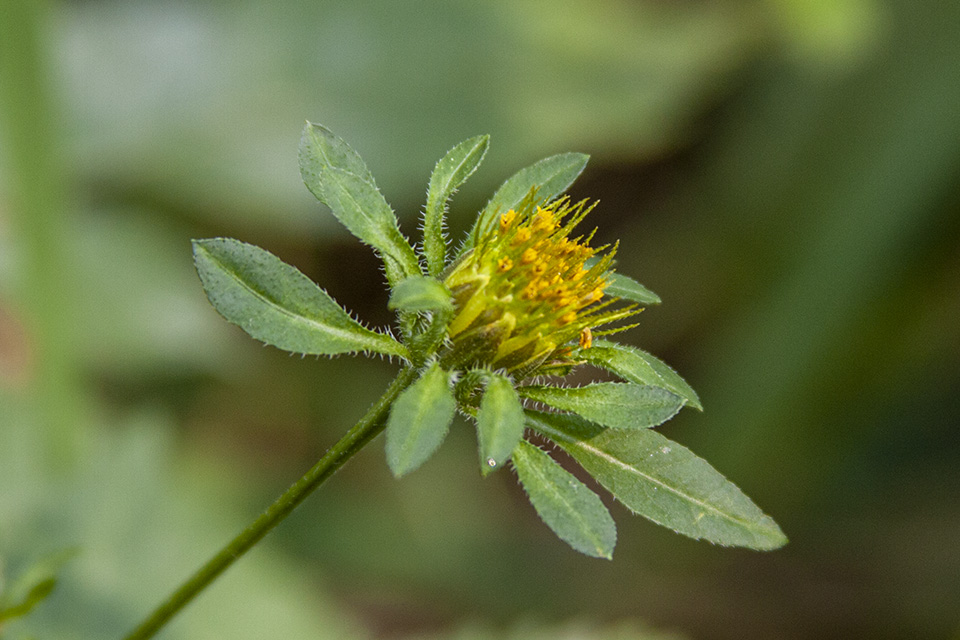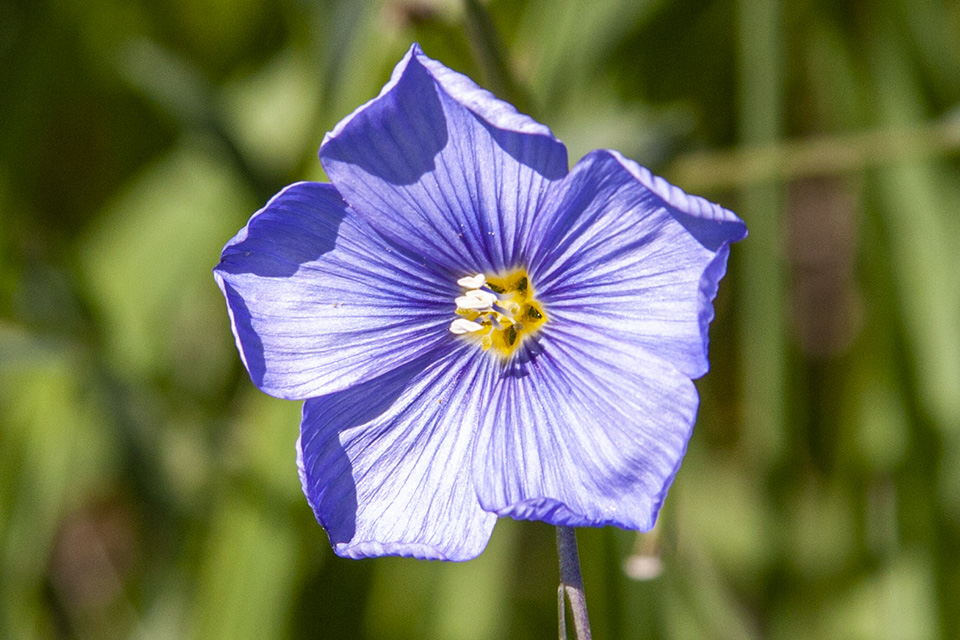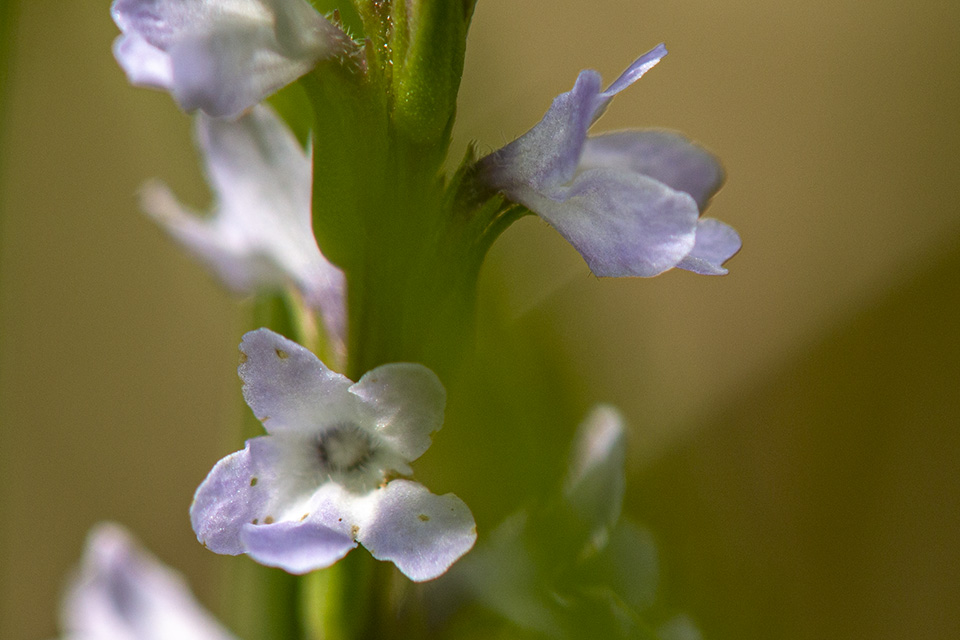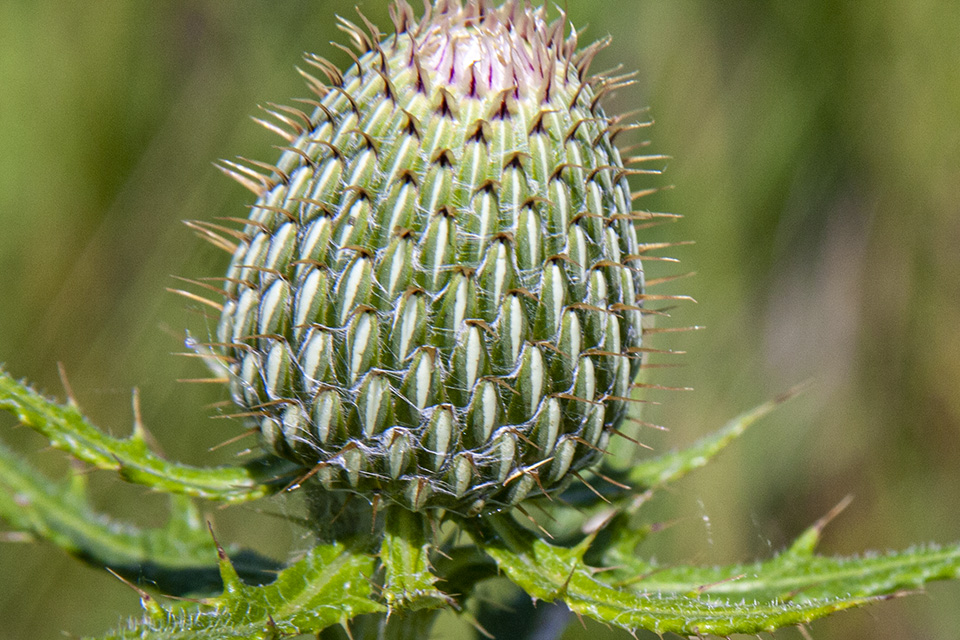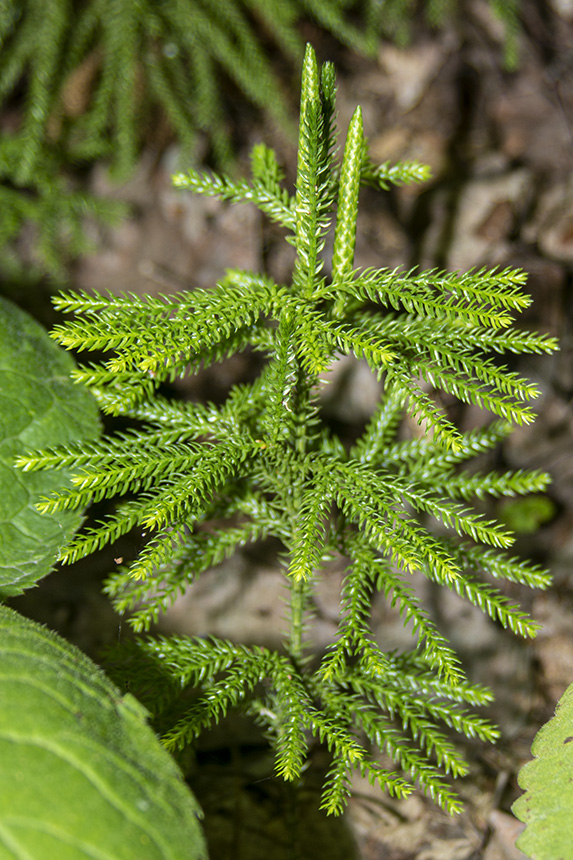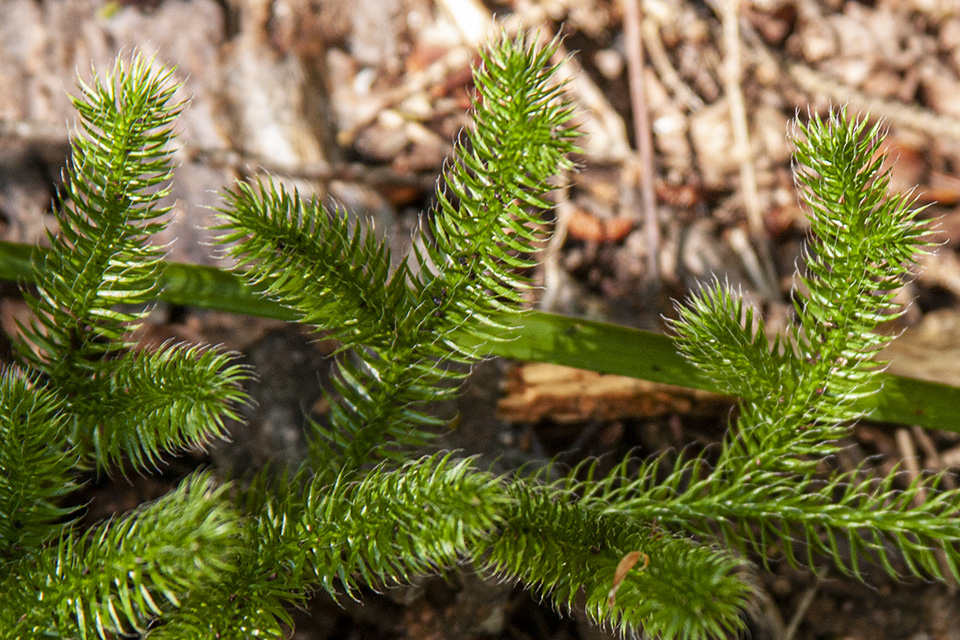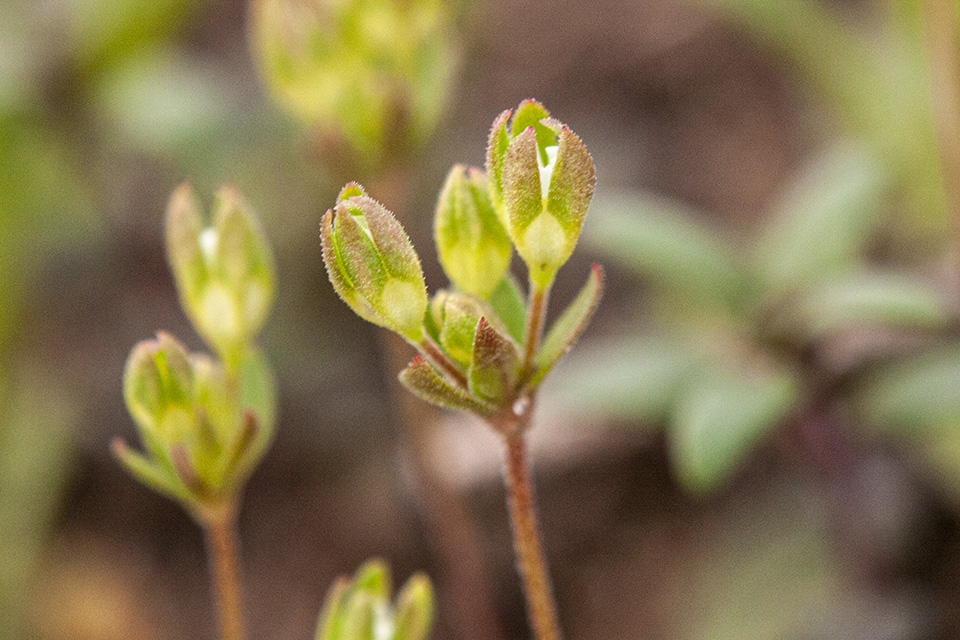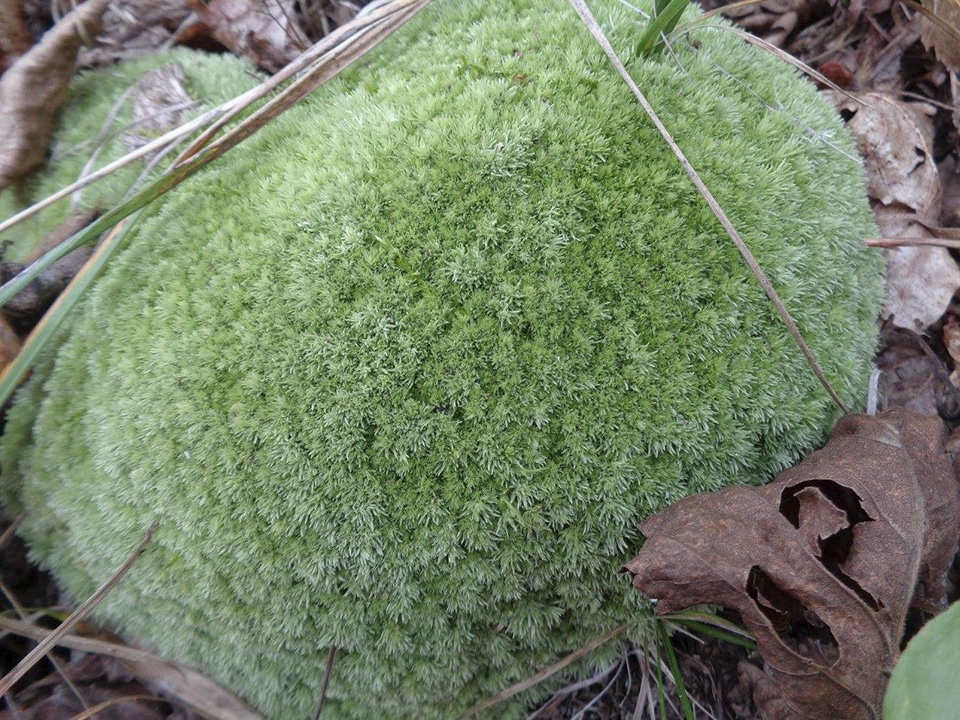
Pincushion moss (Leucobryum glaucum) is a common, large, tall, tuft-forming moss. It is very common in the eastern United States, and common in eastern Minnesota, where it is at the western extent of its range. It is found under partial sun to medium shade in forests, bogs, and swamps. It grows in acidic soil, on rotting logs and stumps, on the bases of trees, and on rock ledges. It is tolerant of disturbance and is often found in cemeteries, in city parks, on trailsides, and in the shade of large buildings.
Pincushion forms a large, smooth, dome-shaped, green or light green to whitish cushion on the ground. The cushion is a dense tuft of numerous individual stems that clearly radiate from a central point of origin. The stems are closely packed and difficult to separate. In favorable conditions the cushion can be up to 5″ tall 40″ in diameter.


